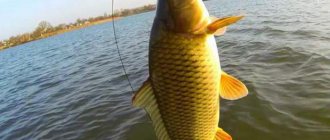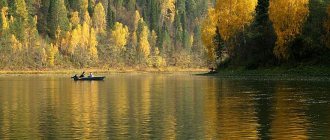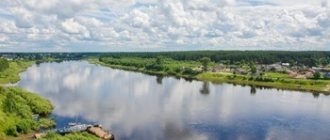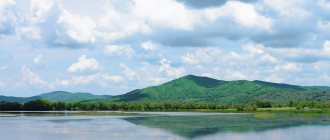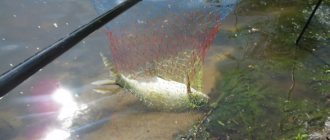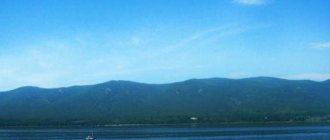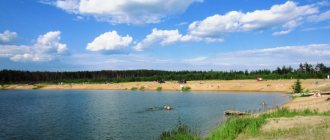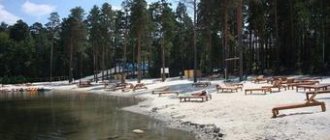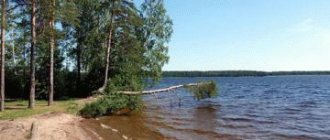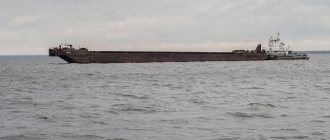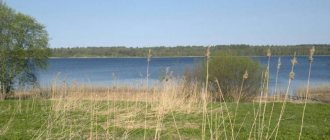Lake Pavlenskoye
Lake-Pavlenskoe.jpg (15.45 KB, Downloads: 1)
2014-9-8 09:03 Download
Lake Pavlenskoe . Pavlenskoye (Tsimlyanskoye, Tsimlyanka, Tsimlyanka quarry) is a freshwater lake in the south of the Moscow region. The lake is located on the territory of the Serpukhov district of the Moscow region, southeast of Serpukhov in the Oka floodplain, 300 meters from the river bed on the left downstream. The lake is a sand quarry connected by a channel to the Oka River. The reservoir has a depth (according to the assurances of numerous fishermen and the testimony of echo sounders) up to 30, in some places 40 meters deep. The area of the lake is 1.2 km², maximum length is 2 km, width is 0.9 km. With such indicators, this is one of the most full-flowing quarries in the Moscow region.
When it comes to fishing, Lake Pavlovskoye is difficult, but with a huge amount of perch, pike perch, bream, large roach, ruffe, and carp (it can be found even in winter, and is usually caught by balancers). In the summer you can catch crucian carp, tench, bleak, ide, chubs, there is a lot of asp, pike and pike perch are also caught.
On a body of water of this size, a boat is required for proper fishing. Due to the lack of an alternative, most spinning anglers have to limit themselves to inflatable boats, which for fishing on the very eve of the calendar winter, and sometimes even in December, does not fully satisfy the requirements of comfort and safety. However, sometimes on a November day you can count more than a dozen “rubber bands” on the water of Tsimlyanka, and this speaks for itself. Many promising places for fishing from a boat can be found in the eastern part of Tsimlyanka, where snags are also added to the depth differences. Still, for the majority of spinning anglers who come to Tsimlyanka, the main option was and still is the coastal fishing option.
Due to the very complex bottom topography, it is useful to have an echo sounder with you - fishing on the Tsimlyanka in most cases depends on changes in depth. As for the absolute depth marks at which fish are most often caught, for perch it is 3.5-6 m, for pike perch 5-10 m, for bersh 7-13 m. Sometimes pike perch and bersh are caught from as much as twenty meters - such depths there are in the central part of the quarry, closer to the southern (industrial) shore, where a sunken dredger sticks out of the water.
From about mid-October, perch in Oka gather in schools and, under a certain combination of hydrological and weather conditions, enter the quarry. The number of perch entering Tsimlyanka varies from year to year. In some years, pike perch is also caught very well in the period preceding freeze-up, and in others - mediocre.
s61.jpg (17.56 KB, Downloads: 3)
2014-9-29 08:06 Download
With any significant wind, it is better to choose a place so that it blows at your back. Considering that the banks of the quarry are almost universally high and steep, this means that the correct choice of the bank on which you intend to fish completely solves the problem of wind. Another thing is that in some of its directions it is quite difficult to find a protected place where fish would bite.
When there is a westerly wind, it is quiet only in the so-called Pension Bay. The name of the bay already speaks for itself. It is closer to the station, it is easiest for people with disabilities to get to it - you only have to walk about 150 m. There is absolutely no current here, you don’t need to move far, you can catch mostly perch with an average weight of 100 g, there are “exits” of large ones - up to 0.5 kg. Asp in the summer, and the bottom predator in the fall and pre-winter is poorly caught in Pensionny. In January, in general, there is nothing to do there; large representatives of the striped tribe are knocked out on the first ice, leaving only the “sailors”. Therefore, if there is a moderate or stronger westerly wind, it is better to refrain from traveling to Tsimlyanka. On the right bank of Pension Bay, roach and bream are caught using different gear, mainly using a “steam locomotive” of two “devils”. The most common fishing is walking, from hole to hole.
The wind from the north and northeast is not a problem. If you go around the quarry along the bank farthest from the Oka, you can find many points protected from such winds and at the same time with very good chances of catching fish. Most of these points are located at a considerable distance from the railway and the concrete road running next to it. Just as a rare bird will fly to the middle of the Dnieper, not every spinning player will reach the far corner of the Tsimlyanka, but it’s worth it.
All the fun begins with a small semi-bay surrounded by trees and dense bushes. From this place to a relatively fresh sandy slope with pebbles on the bottom - everywhere there is very interesting terrain and very good chances of catching perch (usually schooling than solitary), and to a lesser extent - pike perch and pike.
From the Tsimlyanka corner to the channel, the fishing conditions are already different. There are few convenient approaches to the water on this section of the coast; in some places you have to stand close to bushes and tall grass. The “correct” wind direction here is already south-east or south, but you can fish without much hindrance even in moderate winds from other directions. The fact is that great depths are reached from the shore, and the weight of the head can and even should be increased from 12-18 g, usual for other places, to 23-28 g, and with such a head the side wind can easily “break through”, and when monitoring the wiring it doesn't really interfere.
This area has the best chance of catching pike perch, especially shortly (maximum a week) before freeze-up. There are a lot of snags, so if in other places there are still twisters or foam rubber with protruding hooks, then here you need to use non-hooking ones. The extreme point of the site is the corner of the channel. It is the angle, not the duct itself. Already on the ice in the channel, pike perch and perch are often spotted. In addition, as frosts intensify, the channel becomes covered with ice first, and “Tsimlyanka” remains open for several more days and you can fish in it with a spinning rod at this time.
The point is strictly local, so fishing on it alone is not very comfortable. If you stand on a clay cape (it is better to enter the water in the “swamps”) and cast approximately in the direction of the center of the quarry, plus or minus thirty degrees, then you can feel a gentle edge. A school of perch stays near this edge. The mood of perches at this point is subject to inexplicable changes. Either each bite turns out to be effective - the perches “swallow” the foam rubber along with the weight, or you can catch no more than one out of five who decided to try the bait.
The southern shore of Tsimlyanka - from Pension Bay to the channel - is perhaps not very respectable in appearance. There is a dredge here and with it a bunch of all sorts of digging equipment and dump trucks. This shore should seem even more interesting to you than the opposite one. It is more rugged, and depth changes can be found almost everywhere.
The best way to catch pike perch is from the ridge separating Pension Bay from the main part of Tsimlyanka. It is best to cast either from the tip of the ridge towards the opposite bank, or from its middle part towards the center of the quarry.
Further, if you move towards the channel, you can find several very characteristic perch points - with a relatively shallow depth at the outlet and a pit under the shore. In addition to perch, pike is sometimes found in such places.
Many people prefer winter fishing on Tsimlyanka, as it is much more difficult to find fish on the Oka River itself. In addition, the ice here is always thicker than on the river.
On the left side of Pension Bay there is one of the most successful places for catching decent perch - the so-called Moscow coast, as it is called for that reason. that it is located on the side of the capital. It takes about 1 km to get to it, it is better to go by land. The landmark that you have arrived at the place is simple: you have passed the overgrown part of the coast, found yourself on a steep bare area, and here the perch estate begins.
For beginners, the bottom topography on the Moscow coast seems amazing. The depth changes are sharp, as if there were sandy walls around. There are a series of steep drops. At a distance of just 2-4 m from one hole to another, the difference in depths can be 4 m or more. In such hollows or on the tops of “tables” there is often a large perch, often a trophy one.
There are usually very few people there - for some it is difficult to walk along the shore with a heavy box for about a kilometer, for others you don’t want to endlessly drill holes (sometimes up to a hundred a day), because even after arriving at the place you need to conduct a long search for fish sites. Lazy people have nothing to do here. But a trip to the Moscow coast is worth it. And the relatively thin ice here lasts a long time; by the middle of winter it is no more than 15-20 cm, so you can drill a hole quickly. Perch can be caught using jigs, devils, and small balancers and spoons. If you find a good spot, successful fishing with a jig and feeding with small bloodworms is possible.
In the central part of Tsimlyanka, bersh fishing is excellent. Fishing for bersh is mobile and involves constant movement around the area. This fish strikes at a depth of 12-15 m. In the center of Tsnmlyanka there is an unusual bottom topography. There is a high hillock, the depths there are up to 6-8 m, its boundaries are the main concentration areas for fishermen.
Most fishermen use large jigs, on the hook of which 5-10 large bloodworm larvae are strung, with a line of at least 00.2 mm. Everyone's jigs are different. Lead - large, heavy (about 5 g or more), black, teardrop-shaped or elongated. the hook is strong and reliable so that it not only pierces the fish’s mouth, but also does not bend if a large specimen grabs it (it happens that a serious pike perch grabs the bait). Tungsten ones are silver in color, have the shape of a flattened cone, and play more like a spinner. There are the same bloodworms on their hooks.
A heavy bait is required not only for fishing in weak currents, its main purpose is to quickly sink to the desired depth, which saves time when moving from hole to hole in pursuit of a flock. The bait used is a perch bait, a fast “shaking” bait with a high-speed rise up to 1 m from the bottom. However, those anglers who raise it no more than 20 cm catch with no less success. This is already a matter of habit, who likes which wiring technique - fast upward or with a slow stepwise ascent.
Some anglers prefer a balancer. They always have incomparably more bites from bersh than from jigs, but they are realized much less often. Balancers are used in different colors.
Lake Pavlenskoye is a popular vacation spot for Muscovites and residents of Serpukhov. A quarry with clean, warm water, barbecue, active recreation with swimming, fishing in the Oka River is possible. Close to the station it’s a bit dirty, further away it’s cleaner.
Scheme-lake-Pavlenskoe.jpg (10.19 KB, Downloads: 16)
2014-9-8 09:03 Download
20 minutes. Then go forward (the railway will always be on the left). Oka village will be visible. You can also travel from Serpukhov station (stop “Vokzal”) by bus. No. 20 to the end (stop “Beach”). Next go to the railway station. bridge (the Oka River will be on the right).
You can get to Lake Pavlenskoye by car along the M2 highway (Simferopol highway) to Serpukhov, then follow the map to the lake, or to the river.
Near Lake Pavlensky there is the village of Oka and the railway bridge over the Oka River. On the opposite side of the railway, on the right side of the railway bridge on the Oka River, there is a beach. Lake Lutze is located 300 meters north of Pavlenskoye, and the village of Mirny is 1200 meters northeast.
Fishing on the Oka
In the area of the city of Serpukhov you can go fishing in a kaleidoscope of water resources.
You can sit on the banks of many reservoirs. For example, in the Serpukhov region there is the Oka River, there are also Narskie Ponds and Paletskoye Lake. Let's start the story, perhaps, with the Oka River. About 20 species of fish live in the waters of this reservoir. This river is famous for the fact that the fish here are quite impressive in size, so you often have a chance to catch a trophy specimen. As experienced fishermen say, the best place for fishing is right on the banks of the river near the city of Serpukhov. You can fish in this zonal territory with both a fishing rod and a spinning rod.
If we go even deeper and look at successful geographical sites, it is recommended to fish near the village of Lanshino, the village of Protvino, as well as on spits, rifts and shallows located in the area of the Skniga gardening partnership. Fishermen also advise starting fishing in the spring and summer. During this period, bream, silver bream and roach bite well.
Paid fishing in the Serpukhov district of the Moscow region is carried out on Lake Paletskoye and Nara ponds. Let's talk first about the Nara ponds.
As can be seen from the name, there are many reservoirs, namely four. The “Mint” pond is 2 meters deep and has a sandy shore, which is equipped with canopies.
If you fish in this reservoir, then prepare 1,500 rubles in the summer, and winter fishing will cost quite a bit - only 300 rubles.
Paletskoe Lake, which is famous for its mirror purity, is connected to the Nara ponds. It has a large area, almost 64 hectares, and a round shape. This lake is protected because, in addition to very rare fish for the Moscow region - loach and tench, the rarest species of birds live here. In addition to the mentioned fish species, crucian carp, pike, giant rotan, carp and perch are also found here.
If you decide to fish on this lake, do not forget to take a boat with you. The thing is that the lake has swampy shores, and for successful fishing it is important to swim to clean water.
If you still forgot the boat or it’s not there at all, then there are bridges on the lake. By the way, fishing here is paid, but inexpensive.
This lake is not stocked with fish as often as we would like. But such conditions do not interfere with catching large crucian carp.
By the way, they bite best at night and with the sun rising. You will also enjoy fishing for tench here, which does not bite well in other reservoirs of the Moscow region.
So, get in the car or train, which will take you to these fishing spots.
Having arrived on Lake Pavlenskoe for fishing and having taken a boat away from the shore, it is worth taking a closer look at the changes in depth. They can tell you a lot about where the fish are now. So, you can focus on the following indicators:
- perch sites - depth from 3 to 6 meters;
- pike perch sites - depth from 5 to 10 meters;
- Bersha sites - depth from 7 to 14 meters.
But after studying the reviews about fishing on Lake Pavlensky, you may encounter cases of catching the same bersh or pike perch from a depth of up to 25 meters. Naturally, these areas are located closer to the center of the reservoir with a shift to the south.
Perch fishing becomes especially active in October. The fish gather in large schools and come here from the Oka. At this time, you can count on catching him even from the shore.
Fishing here has one important criterion, which allows you to determine the outcome of the fishing in advance. It's the wind. If it exceeds 4-5 m/s, then by all means look for a place so that it blows at your back. This is true both for fishing on Lake Pavlensky in the summer and in other seasons.
Fortunately, the coastal topography of the reservoir almost everywhere has cliffs that protect the water surface from serious disturbances. Therefore, if you find a cozy backwater in a quiet place, you can count on good fishing.
And here's what you need to know: Fishing in the Vologda region and in Vologda
Fishing itself is free in most places here, but if you go, like us, through the fields, you may be charged 200 rubles for entry. with 1 car (travel through Borisovo and Mirny).
However, I don’t think that this is paid fishing on the Oka in Serpukhov, because... it's just an entry fee. If you want to know what paid fishing is like on the beloved Oka River in Serpukhov, then you need to go to recreation centers.
Of course, there will be more comfortable conditions for relaxation and fishing here, but for me this is not the case, because... drive and excitement disappears. It seems to me that it’s as if they were simply putting a fish on a hook for me (as if I just went to the store), and the prices are quite high: the standard cost of a house for two starts from 2 thousand rubles.
per day. As for me, it’s better to live in a tent and fish normally than to pay that amount.
We only paid for the travel and did not regret it, because... There are (unfortunately!) a lot of fish and fishermen here. So the catch here is good.
Oka (Serpukhov) is famous for jig fishing (this is especially noted when the water comes), but as soon as the water begins to subside, you can switch to wobblers. This is so for general development. Well, I'll start my report.
Fishing, Oka, Serpukhov - three seemingly different words, but together they form so succinctly for the fisherman’s ear... I want to say right away that I had a blast fishing here, so now I treat this place with reverence.
We chose a place slightly away from other people so as not to disturb each other. I was in splendid isolation for half an hour, but I was not sad, because... I was not allowed to rest. Of course, it would be stupid to say that in 30 minutes I caught 50 pike and 100 catfish, no, but during this time I caught: 1 pike and 1 zander.
It doesn’t seem like much, but it’s good for the soul. So the fishing will be good. Soon my son joined me, and together we pressed on. In 4 hours we caught:
- 3 zander;
- 4 pikes;
- 2 large bream;
- and a few small things (small pike, etc.)
In general, the bite was excellent. We decided to break for lunch, but Egorka asked me to cook it myself, because... I got very carried away. Well, I didn’t argue and agreed. During this time, my son caught 2 more pike perch.
We stayed here for 2 days. The fish really moved, but towards the end of our rest the bite began to weaken: maybe it realized that we were dangerous guys, maybe our colleagues scared us away. But this didn’t really upset us, since we were about to leave.
In conclusion, I want to say that we really enjoyed fishing on the Oka here, in the Serpukhov area, and we will definitely come back again. The nature here is very beautiful, it’s nice to walk and fish. I believe that you don't need more to have a great time.
The bite forecast will help you better choose a fishing day in January, February, March, April, May, June, July, August, September. October, November, December in Serpukhov. You may also be interested in the bite forecast for all fish in the Moscow region, or fishing in the Moscow region. Well, there is fishing in neighboring reservoirs in the Sergiev Posad region.
You can see all the nearest bodies of water on the map and choose where to go fishing. In Arneevo, Danki, Lake Pavlenskoye, Lanshino, Otradnoye, and of course fishing on the Oka.
Oka is the largest body of water in the area, and of course most fishermen go here. Let us recall that the Oka River is 1,500 kilometers long, and on its banks there are more than ten large cities of Russia, including Serpukhov.
In this area, fishing is possible both from the shore and from a boat. From the shore they mainly catch roach, bream, crucian carp and other white fish using feeder (bottom) rods. Using both conventional feeder equipment and all possible springs and feeders.
Here you can catch perch, pike perch, pike, asp, and chub using spinning rods. It is more convenient to fish from a boat, but shore spinning is possible here, mainly jig.
Region, resort, body of water or base - enter “Serpukhov”, then find a camp site.
And here's what you need to know: TOP 10 reservoirs for excellent winter fishing in the Moscow region - Guide to the Moscow Region
Paid fishing in the Serpukhov region is possible on some ponds.
Fishing in Arneevo Carp pond is a reservoir of about 6 hectares and up to 5 meters deep. Inhabited by carp, crucian carp, roach, perch, bream, pike, grass carp, and silver carp. You are allowed to fish with a maximum of two fishing rods, the number of hooks on which should also not exceed 2 pieces.
Address: Moscow region, Serpukhov district, Arneevo village
Telephone,
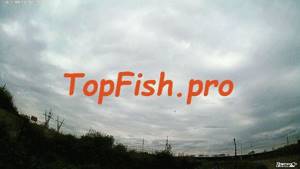
GPS coordinates: 54.970472, 37.591811
Tour price: from 300 to 2500 rubles
Drakino Island is a whole area equipped with parking, cafes, camping, beach and of course fishing spots. For fishing, you can rent everything here; the shore of the reservoir is equipped with bridges.
Address: Moscow region, Serpukhov district, Drakino village
Phone Coordinates
GPS: 54.875056, 37.274334
Tour price: 100 rub.
Today in the waters of the Oka there are:
- Amur;
- Chub;
- crucian carp;
- Carp;
- Carp;
- Rudd;
- Bream;
- Tench;
- Burbot;
- Perch;
- Roach;
- Catfish;
- Zander;
- Barbel;
- Pike;
- Ide;
- Cancer
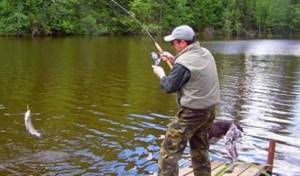
and other less rare species of fish that are rare, but still found.
Naturally, like on any other river, lake or reservoir, you can fish on the Oka both for a fee and for free. A free way of fishing without excess comfort is described in simple words as camping accommodation.
If you have your own tent and gear, free fishing is your option. Of course, thanks to the development of infrastructure, this is not so simple.
Lake Pavlenskoye in the Serpukhov region
Serpukhov: useful information
- City information
- Serpukhov Map
- Places to go Amusement parks (2)
- Parks (2)
- Lakes (1)
- Railway stations (1)
- Ski resorts (1)
- Museums (1)
- Attractions (1)
- Active recreation centers (1)
- Reserves (1)
| Suburban train | "Moscow - Tula" to the "Oka" platform, departure from the Kursky station |
The largest body of water in the Serpukhov region, Lake Pavlenskoye (also known as the Tsimlyansky quarry), attracts more and more fishing fans every year. At the same time, its attractiveness as a recreation area is falling - the beaches are overgrown with garbage, the roads are deteriorating, and infrastructure, at least in the form of waste containers, is not appearing. Despite the unique landscape, clean water and transport accessibility, authorities and businesses are in no hurry to realize the tourism potential of Lake Pavlensky. As a result, only extreme sports enthusiasts and fishermen choose to relax on the shores of the Tsimlyansky quarry. The latter can find several corners of paradise on Pavlenskoye Lake.
Pavlenskoye Lake
Pavlenskoe Lake is located on the territory of the Serpukhov region. It is also known as Tsimlyanskoye Lake or Tsimlyanskoye Quarry. The lake was formed on the site of a sand quarry and is connected to the Oka by a narrow channel. The depth of Lake Pavlenskoye generally varies within five meters, but, according to professional fishermen and echo sounder data, it reaches forty meters in some places, and its area is 1.2 km2.
The lake is one of the deepest in the Moscow region. This circumstance has influenced the fact that the lake is very popular among fishing enthusiasts. Roach, ruffe, perch, bream are found here, and in winter, unlike the Oka, you can catch carp and pike perch here. In addition, the lake is also accessible to “horseless” fishermen, as it is located 100 meters from the Oka railway platform. Of course, this added to his attractiveness.
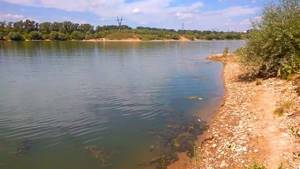
Pavlenskoe Lake attracts not only avid fishermen, but also idle lovers of relaxation by the water. A beautiful sandy beach, located within walking distance from the Oka railway platform, a gentle entrance to the lake, picturesque surroundings - what else is needed on a hot summer day to take a break from the bustle of the metropolis and fully enjoy nature!
You just have to remember that this is a popular vacation spot for residents of the entire surrounding area, and finding a free place on the beach on a fine day can be problematic.
Fishing on Lake Pavlensky in the Serpukhov region
The reservoir is located 300 meters from the Oka and is connected to it by a channel. Essentially this is a large bay of a river. The length of the lake is 2 kilometers, the width varies from 300 to 900 meters. The average depth is 4 meters, but there are also greater depths, so you can fish here not only from the shore, but also from a boat.
According to various sources, perch, bream, pike, roach, ruffe, and silver bream are caught here. On blogs, anglers write about catching chub, bleak and asp. On the western side, the Oka railway platform is practically adjacent to the lake. The most popular beach is located near it. To find a quiet place for fishing, it is advised to go north towards Serpukhov. Here the bottom is muddy, and the shore, as a rule, is littered with driftwood and algae. In such conditions, few people will agree to relax, and it will be possible to go fishing calmly.
The reservoir is ideal for microjig fishing. Having planted, for example, a dragonfly larva, you can pull out the perches one by one. Pike are also taken with such a bait; You can also pull out bream. In August the asp bites well. In this case, it is not necessary to go out on a boat or wade into the water - the fish are caught already half a meter from the shore. They are caught using maggots, dung and earthworms.
Winter fishing is also common on the lake. After freeze-up, you can pull out the same perches. During this period, it is better to use a rewinder. The same attachment will help to catch white bream, silver bream or roach. For the same purpose, you can use small jigs with bloodworms.
Where to swim
Despite the proximity to major highways, the water in Lake Pavlenskoye is considered suitable for swimming. The bottom here is sandy, but there are rocky areas. Thanks to this, even at a depth of more than one and a half meters you can see fish, stones and algae.
The main swimming area is located on the western shore near the train station. The good thing is that there is a smooth entry into the water, suitable for bathing children. But there are also a lot of vacationers here, and, accordingly, a lot of garbage. If you want to find a cleaner place, you need to walk along the south and southeast sides - there are small beaches there.
All rest areas are unofficial, which means that there are no lifeguards on duty, and the area has not been treated for insects and rodents, so it is worth taking repellent with you. Mosquito and tick repellent isn't the only thing you need to pack in your bag. There is no infrastructure at Pavlenskoye Lake, so don’t forget to bring towels, mattresses or blankets, sun umbrellas, food and water, as well as a mini first aid kit in case of injuries and sunburns.
Reviews
Most reviewers write about the unique beauty of the local nature, calling Pavlenskoye Lake a sea, and point out the trash-strewn shores as a negative side. The reason lies not only in the culture of vacationers, but also in the lack of containers for waste collection. So, if you don’t want to be like the others, take a garbage bag with you on your trip to the Tsimlyansky quarry.
The water in Pavlenskoye is warm throughout the summer, but vacationers are advised to come here in June - early July. Again - because of the “garbage” problem. In the spring, the coastal area is cleaned up by volunteers, and at the beginning of the season there are not many dumps here.
How to get to Lake Pavlensky in the Serpukhov region
The distance between Lake Pavlensky and the center of Moscow is about 100 kilometers. The distance from the reservoir to the Moscow Ring Road along the Simferopol Highway is 86 kilometers. So, if you are planning to go to the Tsimlyansky quarry in your car, plan on traveling at least an hour one way, excluding traffic jams.
To get to Pavlenskoye, you need to leave the capital along the Simferopol highway (also a section of the Don highway) and move south about 80 kilometers - until you turn onto the Borisov highway. At the junction with it, turn right towards Serpukhov. At the entrance to this city, turn left onto Okskoye Highway.
The further path depends on which side of the lake you would like to stop on. If you choose the western bank, then after a kilometer from the turn onto the Okskoye Shosse you will need to turn right, pass the crossing over the railway and drive along it to the south to the Oka station. Since it is difficult to get to the water by car - only SUVs will pass - you can leave the car at the station and walk to the beach, the distance is short.
If you need the eastern shore of the lake, then after turning onto the Okskoye Highway you need to follow it to the village of Mirny. You need to get to the eastern outskirts of the village and turn right towards the lake. Follow the country road to the south for about 2 kilometers.
Since there are no major roads near the reservoir, the only option for those who travel by public transport is the train. Trains departing from Kursky Station are suitable. Travel time from Moscow will be about 2 hours.
The third way to get to Pavlensky is to take a taxi. All major carriers operate in Moscow and the Moscow region: Yandex. Taxi", "Maxim", Uber, Gett. You can call a car using a call or mobile application.
Video about Lake Pavlenskoye in the Serpukhov region:
When is the best time to fish?
In the lake, fishermen have the opportunity to try their hand at catching carp and burbot, and the river’s bays literally abound with bream, perch, roach, ide, asp, pike perch, burbot, and catfish.
Natural conditions and bottom topography allow fishermen to use different types of gear, and of all types of bait, it is preferable to use live bait. Paid fishing will provide clients with a guaranteed catch, since the fishing spots, which will be guided by experienced instructors, are periodically fed.
Fishing in the Serpukhov region is carried out without a catch rate - the entire catch is paid according to the price list.
Anyone who has been fishing for a long time knows that it is best to consider the time of the most successful fishing by season.
So spring on the Oka marks a general rise, during which the activity of fish that have just woken up after winter hibernation goes through the roof.
And it's not just like that:
- some species of fish tend to spawn in smaller rivers and tributaries of the Oka;
- Some types of fish are actively looking for food, starving after hibernation.
And how can you refuse such skillful fishing when the fish itself comes into your hands?
If you decide to go fishing on the Oka River or any of its tributaries, prepare for the fact that the catch will be rich in large fish, for example, roach, bream, and silver bream.
If spring is rich in precipitation, and river floods exceed the norm, it is quite possible to hook a podust.
The most successful place for fishing, promising a rich catch in the spring, will, of course, be the bottom layer that smoothly reaches the shallows and areas with reverse water flow - the fish always strives to find food floating in the stream.
In the hot summer, there is almost no active biting, it subsides. After the end of spawning, the fish return to their usual places of residence and behave more quietly.
When fishing on the Oka from a boat or deep-sea fishing, be prepared to catch a real trophy fish. The further you get towards the middle of summer, the clearer the water, and accordingly the fish are more timid, since everything is visible through the transparent water surface.
At this time of year, coastal fishing is ineffective. Long casts and wading fishing are ideal options that promise at least some catch.
Autumn is characterized by activity among predatory fish. The pike bite begins at the end of August.
When you go fishing for burbot, take the advice of experienced fishermen: it is best to catch it closer to the Kashira Bridge using hooks.
Quite a decent specimen can be caught overnight. In anticipation of the cold, pike perch begins to behave more actively.
When choosing a good place for fishing, you should pay attention to:
- Preference should be given to fishing areas with a smooth river flow;
- the bottom should be more or less flat, strewn with pebbles or at least without namul;
- water depth is approximately 3-3.5 m;
- it costs about 15-30 meters to move away from the shore;
- The “fish trail” guarantees a constant bite.
And here's what you need to know: How to make a fishing spider with your own hands. Fishing spider
Winter fishing, in general, differs only in covering the surface of the river with an ice crust and following the general rules:
- You should only fish in holes;
- use animal bait;
- As for the gear, the fishing line should be thinner;
- Don't forget to keep warm. Stock up on a thermos with hot tea or coffee.
Review: Lake Tsimlyanskoye (Russia, Serpukhov region) - “Our Sea”
Tsimlyanskoye Lake is also known as Tsimlyanka, Tsimlyanskoye quarry, Pavlenskoye Lake (that’s how it is indicated on the map). The lake is a stagnant bay of the Oka River, separated from it by a narrow channel.
Lake Tsimlyanskoe is located near the town of Serpukhov near Moscow, near the Oka railway station, between two bridges - a railway and a road (new Simferopol highway).
We have been going on vacation to Tsimlyanka for many years. They came to fish, swim, even spend the night. This is a very picturesque place, dear to the heart! We call it “our sea”))) In the summer there are many visitors to the Oka River from Moscow and nearby cities. But I can’t call Tsimlyanka beach the best in the area for a number of reasons.
The beach of Lake Tsimlyanskoe is located opposite the railway station. So, in particular, it is marked on the map. The beach is small, but with easy access to the water. The bottom is sandy, after a couple of steps there are pebbles (in both directions). In summer, boats cross the lake and you can catch a wave. Very funny! Large ships only sail along the river and do not go to the lake.
As soon as the heat sets in, people flock to the beach, a lot of people. They make fires, set up tents, barbecue and leave behind mountains of garbage! Landfills are created spontaneously, there are simply no trash cans, no one needs it! The periodic contamination of the lake is terribly infuriating, in particular, which is why I have been a rare guest on the Oka in recent years. By the end of summer it is simply unpleasant to be here.
If you still decide to visit the beach of Lake Tsimlyansk, I recommend doing it in early summer. There will already be people on the beach, but there will be even less garbage. And vacationers are still cultured and clean up after themselves.
You can find a convenient rookery on the main beach or walk along the lake. If you move to the left, towards Serpukhov, you will find narrow, quiet banks. Silt floats there, drifting driftwood and plague fish are washed in by the current, but you can go fishing. Somehow huge asps were caught in that place!
If you move in the other direction - towards the railway bridge, you can find cozy small beaches in the bushes. The entrance is also convenient, but there is a lot of water floating around, as there are trees nearby.
We used to love coming to the channel and, in fact, the Oka. But swimming here is not convenient, especially with children. At the entrance there are stones and a very strong current. Although it’s also beautiful, of course.
A road made of blocks leads to the river. It stretches along the railway line. The photo was taken 7 years ago, no less, and the road here is still in good condition. It's much worse now.
It is difficult to get to the beach by car, only by SUV. Therefore, in the summer, vacationers leave them at the station on this (see above) road. Or how they can go down. No matter how much they dug there, no matter how much dirt they threw in, the number of dashing motorists never ceases!
But it's worth it. To my taste, no matter where you look from or where you drive, Tsimlyanka is very picturesque! The water changes color depending on the month and weather; it can be aquamarine, blue, or yellowish near the shore (the sand is to blame here).
You can, of course, get to the lake by car (where you leave it later, decide for yourself). If you drive from Moscow along the Simferopol highway, you need to turn onto the Borisov highway and get to its intersection with Oksky. Turn left and move along the railway to the Oka railway station (it will be on a hill).
The station is small, trains do not come here often. When we were kids, we drove around the Oka River just like that (what kind of cars are there?!) and calculated when we would leave. Train intervals are impressive even in summer, I think.
We traveled from Serpukhov to Oka by public transport only once. And then we had to walk a lot! The minibus brought us to the NIIR plant (that’s what the station is called), and from there it was a long walk to the lake - along the ill-fated concrete and dust.
I’ll say a few words about the infrastructure (toilets on the beach, for example, cafes and all that). She is not on the lake. Absolutely! I don’t know, maybe this year on Tsimlyanka someone will take up this task and at least put up some trash cans (I’m not talking about outhouses and changing rooms). This is not yet expected and will not happen!
The same applies to tents with food, water and other pleasures of vacationers. As far as I remember, there was only one store in the area near the railway bridge. It's a decent walk to it from any end of the beach. Therefore, my advice to vacationers is to take EVERYTHING, EVERYTHING, EVERYTHING with you. And take out the trash.
Tsimlyanskoe Lake gave me many pleasant moments. I recently introduced my daughter to him, and now she is also in love with “our sea.” )))
Swimming, relaxing and camping on the lake
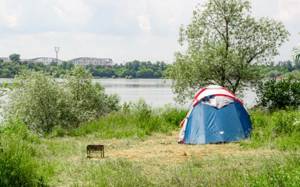
If you came to the lake just to swim, it’s better to go to the beaches for one day; the beaches are indicated on the map and are located mainly in the west and south of the lake.
Getting to the north and east of the lake on foot is quite problematic, especially if you come by train. In the north and east there are no beaches as such, you will have to go down to the water along a steep slope, and there will be a problem with bypassing the industrial zone, as shown on the map above, but you can go around along the coast there is an inconspicuous path, but you need boots or waterproof shoes.
When approaching by car, camping sites can be found in the north and east of the lake, the entrances are shown above, but you won’t be able to stand directly by the water; the descent to the water is everywhere along a steep ridge.
We recommend: What is the difference between a hunting knife and a regular knife, and is it possible to carry it?
